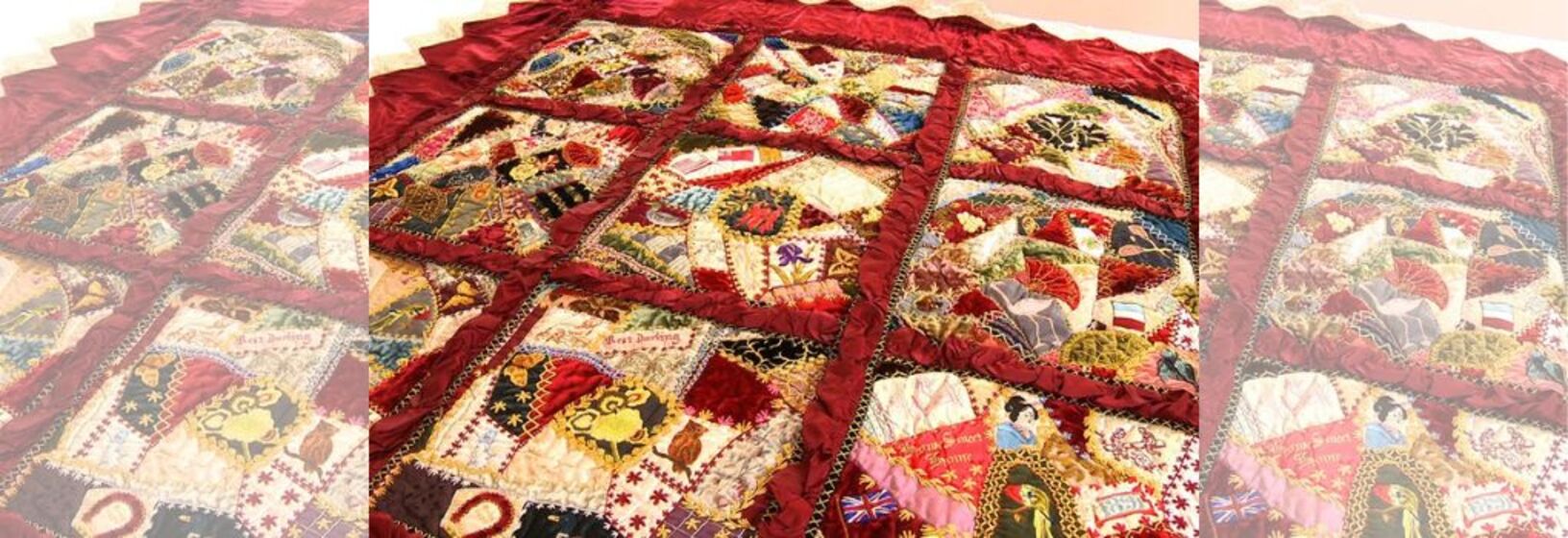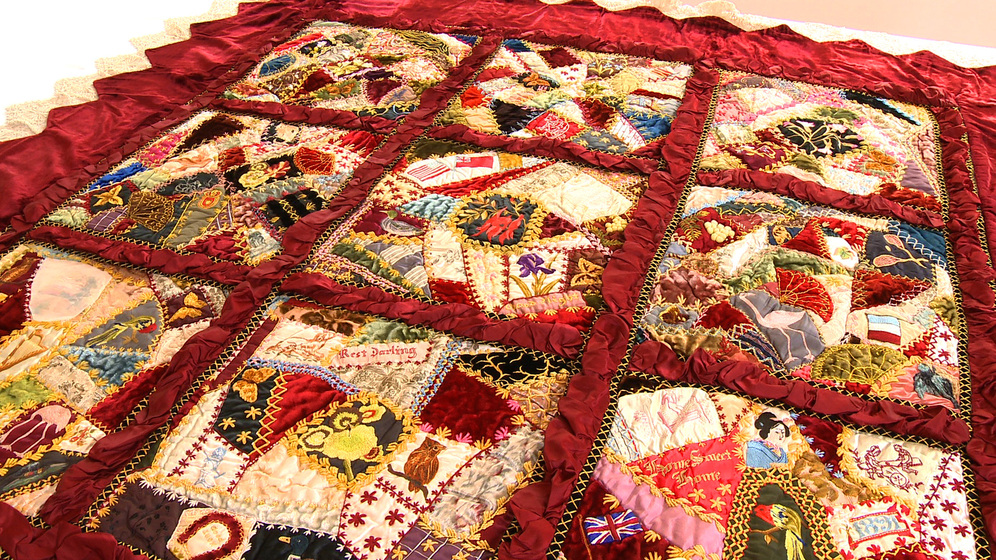Marianne Gibson's Crazy Patchwork Quilt
In 1876, the Japanese Pavilion at the Philadelphia Centennial Exposition caused quite a stir. It featured ceramics and other art objects that were asymmetrical, or “crazed”. Whilst the interest created in America was telling of the whole mood of modernism (which questioned and reformed traditional aesthetic ideas), its effect on the everyday lives of women was seen in the groundswell of support for crazy patchworking (also known as crazy quilting).
Crazy patchwork became a hugely popular ‘craze’ that lasted until the 1920s, with women’s publications full of the opinions of both followers and protestors. Crazy patchwork is differs considerably from traditional patchwork quilting: where traditional patchwork is batted, or filled, and composed of precise patches arranged into neat and sometimes complex geometric patterns, crazy patchwork consists of uneven patches that are composed of any variety of fabrics (especially exotic fabrics at the start of the craze) and are embellished with all sorts of trimmings: lace, embroidery, buttons, ribbons. In addition to this crazy patchwork quilts are very personalised.
Crazy quilts broke all the rules of traditional quilts and were highly experimental and creative: makers were not afraid to use clashing colours or to cover every surface with designs. Cushions and pillows were also made to the style. It was through this craze and Victorian women’s domestic creative work that modernism was ushered into the home.
Marianne Gibson was born in Armagh, Ireland in 1837. As a young woman she and her sister accompanied their uncle to Australia and settled in Wangaratta. In 1864 Marianne married Alexander McCullen Gibson, who operated a successful general store.
Marianne’s skill with needlepoint, her access to fine fabrics of the day, including silks and European lace, and her creative instinct can all be seen in the remarkable Crazy Patchwork Quilt known as the Marianne Gibson Quilt. Replete with Australian motifs, including flora and birdlife, and personal symbols, such as tributes to a child she lost, the quilt is dated and signed by Marianne, indicating both her creative ownership and her intention for the quilt to be kept as an heirloom.
It is precisely because it was honoured as an heirloom that it survives in such condition to this day. Donated to the collection of the Wangaratta Historical Society by Alma Gard, it is one the finest and best-preserved crazy patchwork quilts from the Victorian era in the world.
















